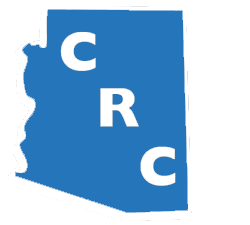Fundamentals of Kitchen Exhaust Air Movement Tucson, Arizona
CRC is providing Technical information on Commercial Kitchen Air Movement
Hot air rises! An exhaust fan in the ceiling could remove much of the heat produced by cooking equipment. But mix in smoke, volatile organic compounds, grease particles and vapor from cooking, and a means to capture and contain the effluent becomes necessary to avoid health and fire hazards. While an exhaust hood serves that purpose, the key question becomes: what is the appropriate exhaust rate? The answer always depends on several factors: the menu of food products and the type (and use) of the cooking equipment under the hood, the style and geometry of the hood itself, and how the makeup air (conditioned or otherwise) is introduced into the kitchen
The Cooking Factor Cooking appliances are categorized as light-, medium-, heavy-, and extra heavy-duty, depending on the strength of the thermal plume and the quantity of grease, smoke, heat, water vapor, and combustion products produced. The strength of the thermal plume is a major factor in determining the exhaust rate. By their nature, these thermal plumes rise by natural convection, but they are turbulent and different cooking processes have different “surge” characteristics. For example, the plume from hamburger cooking is strongest when flipping the burgers. Ovens and pressure fryers may have very little plume until they are opened to remove food product. Open flame, non-thermostatically controlled appliances, such as underfired broilers and open top ranges, exhibit strong steady plumes. Thermostatically controlled appliances, such as griddles and fryers have weaker plumes that fluctuate in sequence with thermostat cycling (particularly gas-fired equipment). As the plume rises, it should be captured by the hood and removed by the suction of the exhaust fan. Air in the proximity of the appliances and hood moves in to replace it. This replacement air, which must ultimately originate as outside air, is referred to as makeup air. Fundamentals of Kitchen Exhaust 1 The Cooking Factor 1 The Hood Factor 2 The Makeup Air Factor 6 The Design Process 7 QSR Design Example A-1 Casual Dining Example B-1 Building codes distinguish between cooking processes that create smoke and grease (e.g., frying, griddling, or charbroiling) and those that produce only Fundamentals of Kitchen Exhaust Design Guide 1 – Selecting and Sizing Exhaust Hoods – 03.15.04 2 heat and moisture (e.g., dishwashing and some baking and steaming operations). Cooking that produces smoke and grease requires liquid-tight construction with a built-in fire suppression system (Type I hood), while operations that produce only heat and moisture do not require liquid-tight construction or a fire suppression system (Type II hood). Building Codes Historically the United States had three organizations that drafted model building codes which were adopted by local jurisdictions as law. These organizations sponsored development of standardized building codes, usually called “model building codes”, to assure better code uniformity within the three regions in which they evolved. In the northeast US, the Building Officials Council Association sponsored the National Building Code. In the southeast US, the Southern Building Code Council International, sponsored the Standard Building Code. In western US, the International Council of Building Code Officials sponsored the Uniform Building Code. California jurisdictions adopted the UBC, including the Uniform Mechanical Code (UMC). In 1994 these organizations formed the International Code Council to unify their codes. In 2000, the first full edition of the International Building Code (IBC) was published. In 2000, the National Fire Protection Association (NFPA) announced that it would sponsor a complete building code that would be an alternative to the IBC. In 2002, NFPA published its first edition. Mechanical code requirements for kitchen ventilation are similar among these model codes. Unlisted Hoods must meet the prescriptive materials and design requirements of the local building and health codes. In addition they must be operated at exhaust rates dictated by the local building code. Listed Hoods have been tested against a recognized standard, such as Underwriters Laboratories (UL) Standard 710. Standard 710 dictates materials and design requirements similar to those in the building code and it has a performance test requirement for capture and containment of the thermal plume. Building codes also require Type I hoods (liquid-tight construction with a built-in fire suppression system) over cooking operations which produce smoke and grease. Requires Cooking operations that produce only heat and moisture require a Type II hood (liquidtight construction and a fire suppression system are not required). Menu items may produce more or less smoke and grease depending on their fat content and how they are cooked. Higher fat content foods tend to release more smoke and grease regardless of the type of cooking process. Testing under an ASHRAE sponsored research project at the University of Minnesota confirmed that hamburger cooked on a charbroiler releases finer smoke particles and more grease vapor and particles than hamburger cooked on a griddle. The percentage fat content of hamburger also contributes to differences in the amount of grease and smoke released in cooking. Chicken breast, which has less fat compared to hamburger, releases less particulate and less grease during cooking on a charbroiler or on a griddle compared to hamburger.
Cleaning Resource Center has provided Commercial Kitchen Air Fundamentals
The technical Information provided is for Reference only
file:///C:/Users/Owner/Downloads/commercial_kitchen_hood_design_guide_1_031504.pdf


